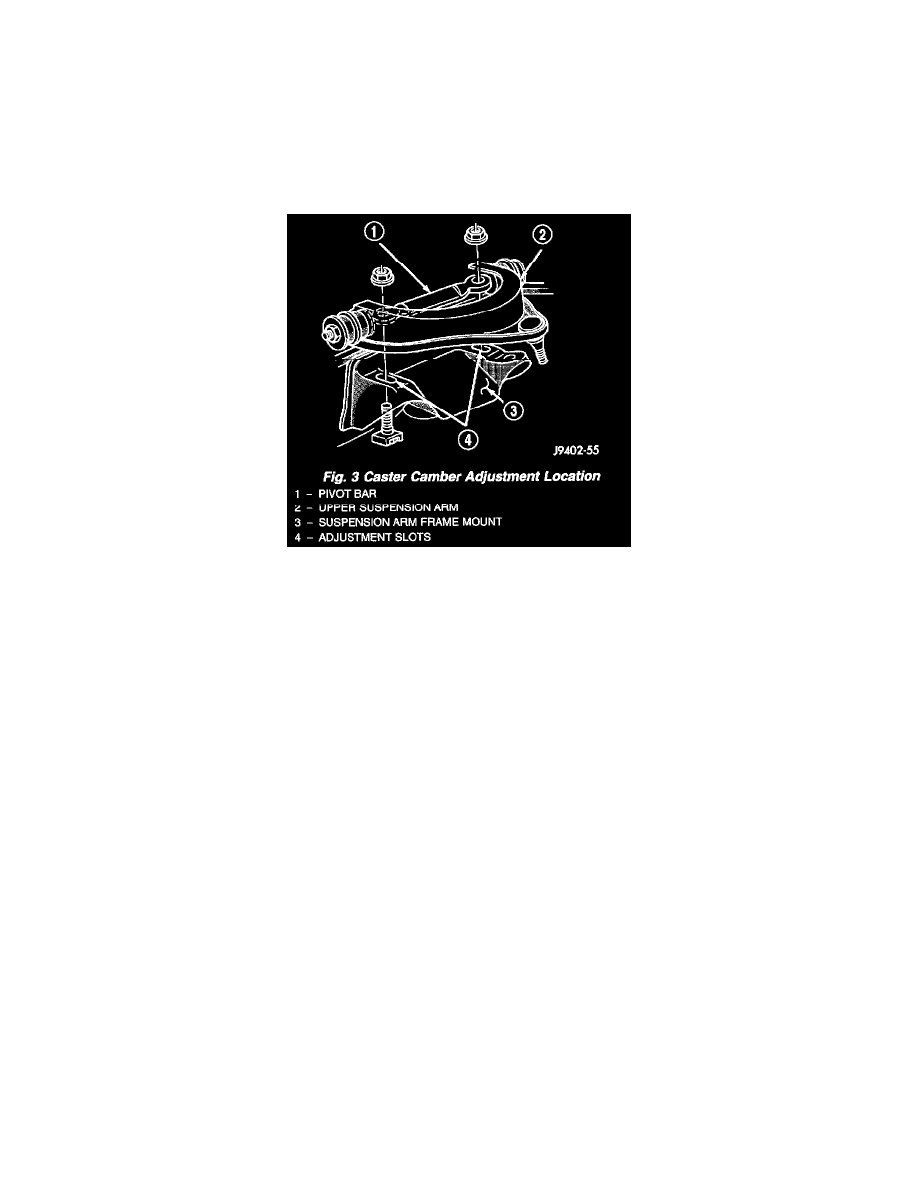RAM 2500 Truck 2WD V8-5.2L VIN Y (2000)

Alignment: Service and Repair
Wheel Alignment
Alignment Independent Front Suspension
OVERVIEW
Before each alignment reading the vehicle should be jounced (rear first, then front). Grasp each bumper at the center and jounce the vehicle up and
down several times. Always release the bumper in the down position. Set the front end alignment to specifications while the vehicle is in its
NORMALLY LOADED CONDITION.
Camber and caster angle adjustments involve changing the position of the upper suspension arm pivot bar. Refer to the Alignment Specification Chart
for the correct setting.
CASTER
Move the rear position of the pivot bar in or out. This will change the caster angle significantly and camber angle only slightly. To retain camber move
the forward pivot very slightly in the opposite direction.
CAMBER
Move the forward position of the pivot bar in or out. This will change the camber angle significantly and caster angle only slightly. The camber angle
should be adjusted as close as possible to the preferred service specification. After adjustment is made tighten pivot bar nuts to specifications.
TOE POSITION
The wheel toe position adjustment should be the final adjustment.
1. Start the engine and turn wheels both ways before straightening the wheels. Center and secure the steering wheel and turn off engine.
2. Loosen the tie rod adjustment sleeve clamp bolts/nuts.
NOTE: Each front wheel should be adjusted for one-half of the total toe position specification. This will ensure the steering wheel will be
centered when the wheels are positioned straight-ahead.
3. Adjust the wheel toe position by turning the tie rod adjustment sleeves as necessary.
Cab-Chassis Caster Correction
NOTE: To determine the correct caster alignment angle for Cab-Chassis vehicles the following procedure must be performed.
NOTE: 4x2 11000 GVW has a solid front axle and uses a 4x4 frame.
